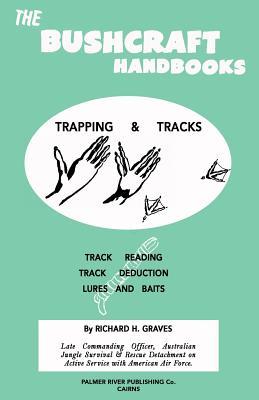"The Bushcraft Handbooks" were first published in Australia in 1952. Based on the Author's wartime service in Australia and New Guinea teaching "Junglecraft" to Australian and American forces, they are distilled, concentrated old-time bushcraft knowledge, presented in a very easy to assimilate format. For those who remember them, the Bushcraft Handbooks are also a heavy hit of nostalgia.
Rather than publish all of the volumes under the one cover, the Author originally chose to publish each aspect of bushcraft in its own individual handbook. His rationale was that the reader was more inclined to take a 50 page handbook with him into the wilds than a 400 page book. The former can be easily slipped into a pocket or daypack, while the latter cannot. The Bushcraft Handbooks are useless unless the reader practices the skills the books were designed to impart. The individual handbooks format was chosen to support that end.
Out of print for decades, and in keeping with the Author's wishes, this series of Bushcraft Handbooks are reproduced as close to their original format as possible. The series comprises the following volumes:
- Bush Ropemaking,
- Bush Hutmaking,
- Traps & Snares,
- Bush Campcraft,
- Time & Direction,
- Travel & Gear,
- Food & Water in the Bush,
- Firemaking & Lighting,
- Trapping & Tracks,
- Knots & Lashings.
From the introduction to "Trapping & Tracks"
"The signs animals leave on the ground can be more revealing than any book written by man, but unfortunately few people are able to see these signs and fewer still can read them. To understand something of the behaviour of animals one must realise that the development of their senses is markedly different to mankind's, and therefore where we obtain information through our eyes and ears, one animal may obtain the same information through its sense of smell and another through its ability to detect temperature changes, or through vibrations. Where man communicates with man through speech, some forms of animal life communicate through telepathy. You see this in a flock of pigeons which turn in flight as one bird. This handbook broadly deals with some of these special characteristics explaining how knowledge of the 'sensitivity' of the creature is useful", and how the animal's tracks provide a reliable indicator to its habits. The whole area covered in this book, if practised, leads to a remarkable development of one's powers of observation and deduction."
